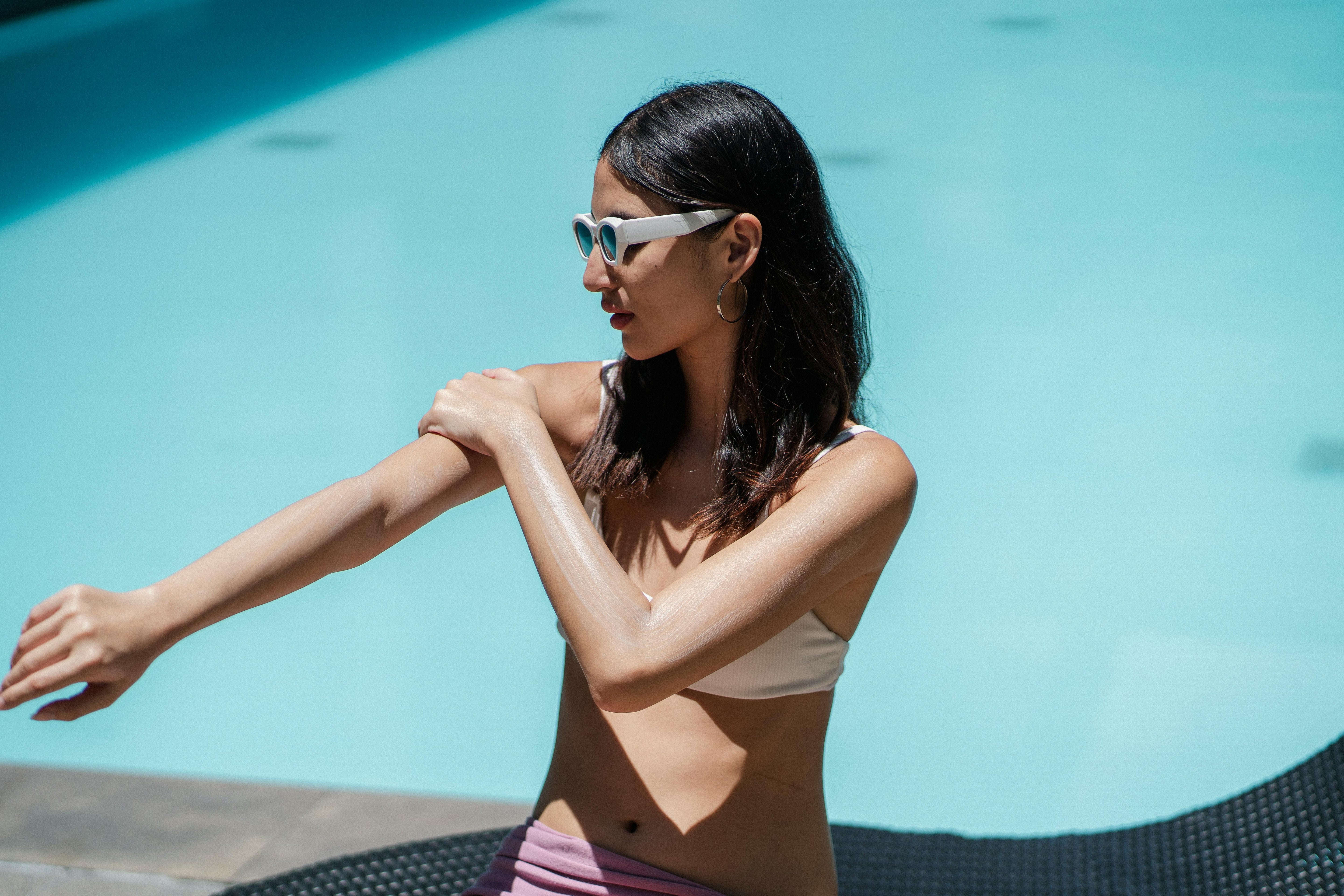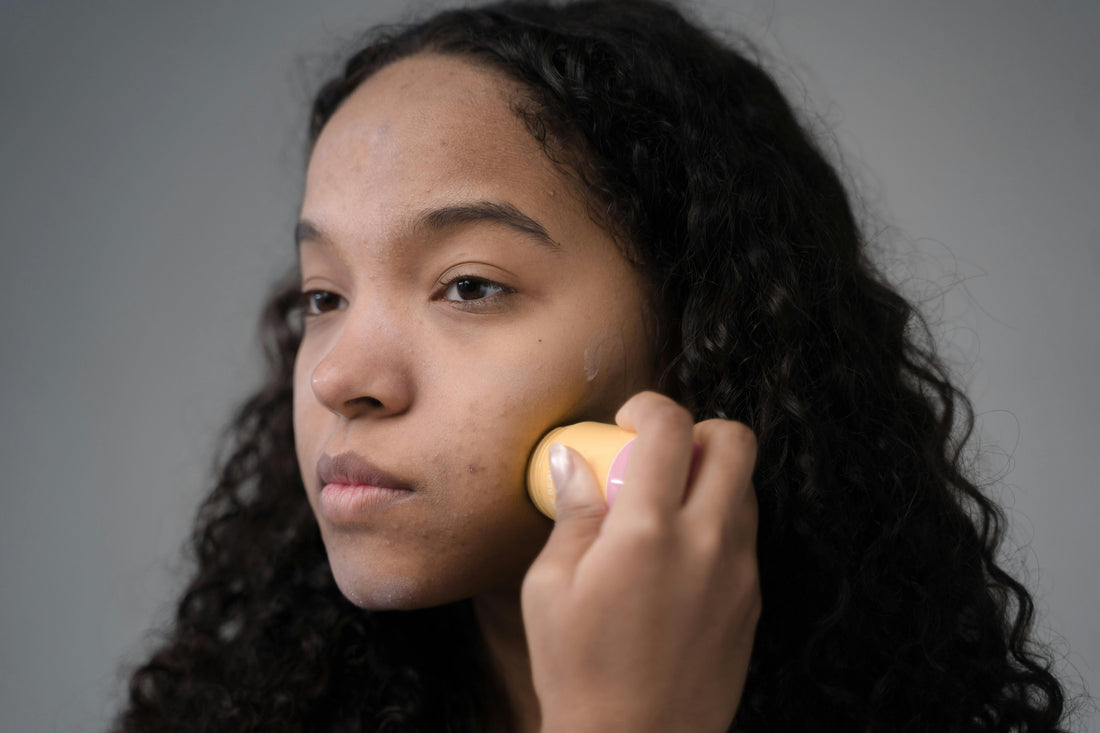TL;DR:
Not all sunscreens work the same way. Chemical sunscreens absorb UV rays; mineral sunscreens reflect them. Both protect your skin, but they have different ingredients, health effects, and environmental impacts. Here’s what you need to know to make the safest, smartest choice.
Why is sunscreen important?
Sunscreen protects your skin from harmful ultraviolet (UV) rays, which can cause much more than just sunburn. Without sunscreen, UV exposure leads to premature aging—like wrinkles and sunspots—in fact, up to 90% of visible skin aging is caused by the sun (Skin Cancer Foundation, 2019). Even more seriously, UV rays are the leading cause of skin cancers, including melanoma; in the UK, 86% of melanomas are linked to UV radiation. UV rays can also damage your eyes, causing cataracts and other problems (Skin Cancer Foundation).
Sunscreen acts as a protective shield, blocking and reflecting these rays—even on cloudy or cool days, when more than 90% of UV still reaches your skin (Cancer Research UK).
In short: Daily sunscreen is essential to prevent sunburn, slow skin aging, reduce cancer risk, and keep your skin and eyes healthy.

What’s the difference between mineral and chemical sunscreen?
You’ve probably heard “mineral” and “chemical” sunscreen, but what’s the real difference—and why does it matter?
Mineral sunscreens (aka physical sunscreens) use zinc oxide or titanium dioxide to sit on top of your skin and reflect UV rays. “Mineral sunscreen works like a shield,” explains the American Academy of Dermatology Association.
Chemical sunscreens, on the other hand, work like a sponge: they absorb UV rays into the skin, converting them into heat released from the skin (Everyday Health, 2021). Their active ingredients include oxybenzone, avobenzone, octinoxate, and others.
How do they interact with UV rays?
- Mineral: Reflect both UVA and UVB rays, protect immediately on application. Zinc oxide is especially effective against UVA rays, while titanium dioxide focuses on blocking UVB rays. Used together, they create a broad-spectrum barrier that shields your skin from the full range of harmful sunlight (Livestrong; National Center for Biotechnology Information, 2011).
- Chemical: Absorb rays, take 20–30 minutes to activate, and need to be applied before sun exposure. Most chemical sunscreens provide broad-spectrum protection by combining multiple active ingredients, since no single chemical usually blocks both UVA and UVB rays alone (Cetaphil).
Both types: Choose broad-spectrum formulas for full protection against skin aging, sunburn, and skin cancer (Skin Cancer Foundation).
In conclusion, in terms of sun protection, there is no clear winner. “The most effective sunscreen is the one you will you use,” dermatologist Nananamibia Duffy, M.D., says, highlighting that the efficacy of every sunscreen (as long as it is a broad-spectrum lotion with 30+) depends on wearing it consistency (Healthline).
What about health and safety?
Mineral (zinc oxide, titanium dioxide):
- FDA: “Classified as safe and effective” (EWG).
- Less likely to cause irritation; “Mineral sunscreens tend to be less likely to cause allergic reactions or skin irritation, although this can vary from person to person,” says Akis Ntonos, dermatology nurse practitioner (CNN, 2023).
- Studies show nanoparticles in mineral sunscreens generally don’t penetrate skin, but a small amount may dissolve and be absorbed as zinc ions (EWG, European Commission's Scientific Committee on Consumer Safety). Research is ongoing to better understand any potential risks.
-
Tend to also be non-comedogenic and non-inflammatory to those with acne-prone skin. And zinc oxide may even help to improve acne (Byrdie, 2023; Skin Software).
Chemical:
- FDA requests more safety data for 12 common ingredients (Everyday Health).
- Oxybenzone and octinoxate may cause hormonal disruption or allergies. In particular, “oxybenzone is known to disrupt hormones and to cause allergic skin reactions… recent studies suggest it may increase the risk of breast cancer and endometriosis,” (EWG).
How do they look and feel?
- Mineral: Thicker, can leave a white cast (especially non-tinted or older formulas), but new versions are more sheer and tinted. Starts working immediately.
- Chemical: Lightweight, clear, absorbs easily, and popular for daily and spray use. Requires 20–30 minutes to work (CNET).
Is mineral sunscreen better for the environment?
Mineral sunscreens, especially non-nano formulas, are considered safer for marine life and coral reefs.
- Chemical ingredients like oxybenzone and octinoxate are proven to damage coral and aquatic ecosystems (National Ocean Service).
- Some nano-sized mineral particles may still pose risks to marine life; non-nano options are the best choice for the environment as they are less likely to be ingested by marine life (Earth.org).
What are the best eco-friendly mineral sunscreens?
Looking for reef-safe, non-nano mineral sunscreens? Here are some top picks:
- Suntribe: Worry-free, additive-free, Sweden-made.
- Sol de Ibiza: Organic, zero-waste, plastic-free.
- Naif: Vegan, eco-friendly.
- PURU: 100% natural, Swiss brand.
- Raw Love Sunscreen: Biodegradable, Hawaii-based.
- SURFMUD: Australian, natural, for surfers.
- Sun & Earth: Biodegradable, zinc-based, marine-safe.
- People of the Earth: Organic, chemical-free.
(Choose the sunscreen you’ll actually use—protection only works if you apply it consistently!)
FAQs
What is mineral sunscreen?
A sunscreen that uses zinc oxide and/or titanium dioxide to physically block and reflect UVA/UVB rays.
What is chemical sunscreen?
A sunscreen that absorbs UV rays using compounds like avobenzone, oxybenzone, and octinoxate.
Is mineral sunscreen better for sensitive skin?
Yes. It’s less likely to irritate, cause allergies, or trigger acne.
Is mineral sunscreen reef-safe?
Non-nano mineral formulas are safest for coral and marine life.
Does mineral sunscreen protect against tanning?
Yes, but no sunscreen blocks 100% of rays—some tanning may still occur.
How often should you reapply sunscreen?
Every 2 hours, or right after swimming/sweating.
Are there any downsides to mineral sunscreen?
Some formulas can feel thicker or leave a visible white cast.
Can you use sunscreen every day?
Absolutely—daily use protects from premature aging and skin cancer.
Which UV ray is most harmful?
UVB causes most sunburn and skin cancers; UVA ages the skin and also contributes to skin cancer.
Key Takeaways
- Both mineral and chemical sunscreens protect against sun damage, but work differently.
- Mineral sunscreens are best for sensitive skin and the environment—especially non-nano types.
- Daily, broad-spectrum sunscreen use is your best defense against aging and skin cancer.




